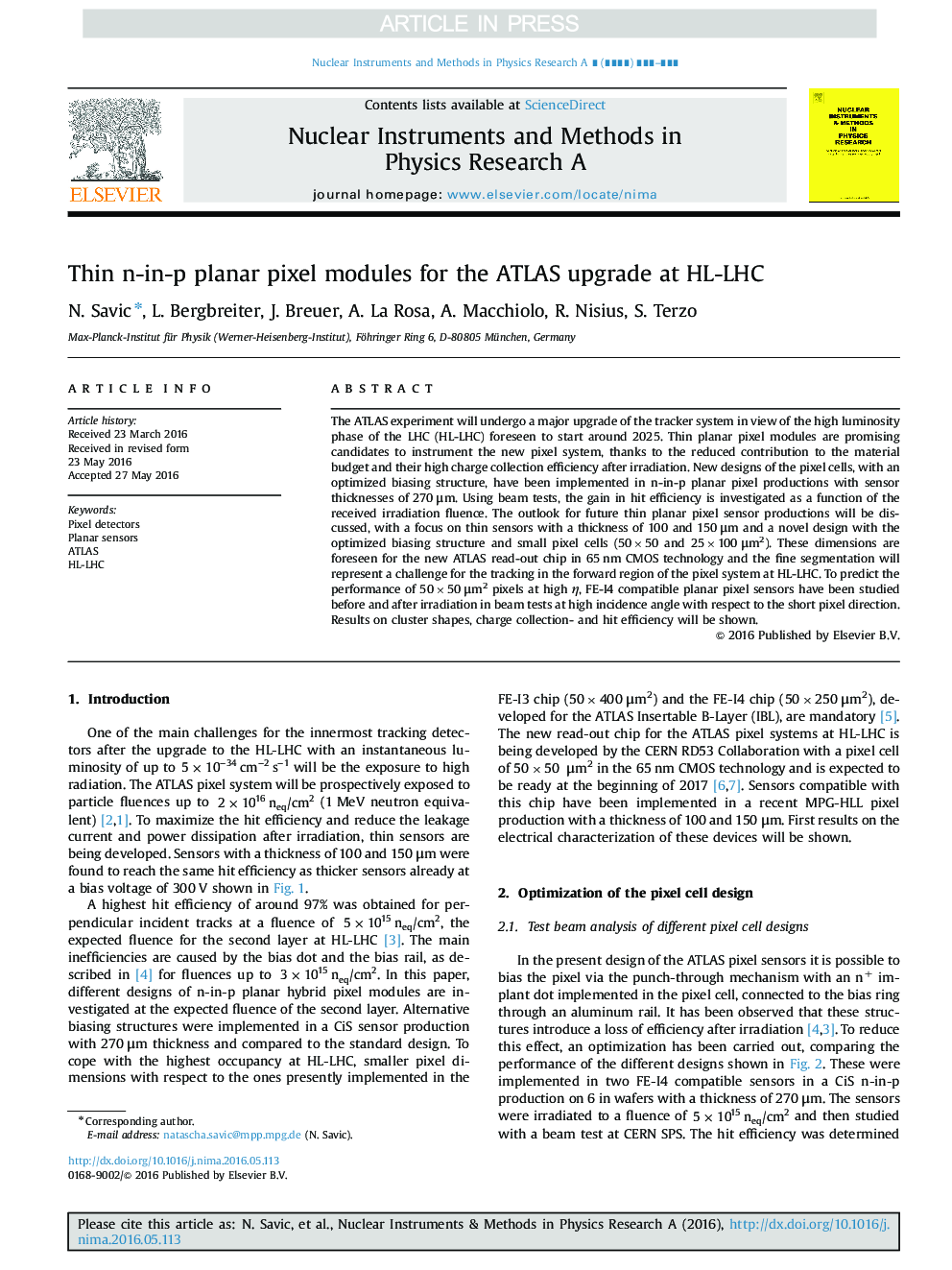| Article ID | Journal | Published Year | Pages | File Type |
|---|---|---|---|---|
| 5492839 | Nuclear Instruments and Methods in Physics Research Section A: Accelerators, Spectrometers, Detectors and Associated Equipment | 2017 | 5 Pages |
Abstract
The ATLAS experiment will undergo a major upgrade of the tracker system in view of the high luminosity phase of the LHC (HL-LHC) foreseen to start around 2025. Thin planar pixel modules are promising candidates to instrument the new pixel system, thanks to the reduced contribution to the material budget and their high charge collection efficiency after irradiation. New designs of the pixel cells, with an optimized biasing structure, have been implemented in n-in-p planar pixel productions with sensor thicknesses of 270 μm. Using beam tests, the gain in hit efficiency is investigated as a function of the received irradiation fluence. The outlook for future thin planar pixel sensor productions will be discussed, with a focus on thin sensors with a thickness of 100 and 150 μm and a novel design with the optimized biasing structure and small pixel cells (50Ã50 and 25Ã100 μm2). These dimensions are foreseen for the new ATLAS read-out chip in 65 nm CMOS technology and the fine segmentation will represent a challenge for the tracking in the forward region of the pixel system at HL-LHC. To predict the performance of 50Ã50 μm2 pixels at high η, FE-I4 compatible planar pixel sensors have been studied before and after irradiation in beam tests at high incidence angle with respect to the short pixel direction. Results on cluster shapes, charge collection- and hit efficiency will be shown.
Keywords
Related Topics
Physical Sciences and Engineering
Physics and Astronomy
Instrumentation
Authors
N. Savic, L. Bergbreiter, J. Breuer, A. La Rosa, A. Macchiolo, R. Nisius, S. Terzo,
